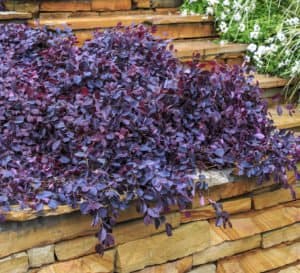Flowering plants should be pruned according to their flowering cycle; but, how do you know when the flowering cycle ends and begins?
For the sake of a starting point, your plant blooms in early spring. After all blooms are naturally spent, the plant stops producing new blooms in summer; however, it starts setting new buds for the following blooming season.
There’s a delicate balance – if you prune too early, you will remove buds for the upcoming blooming season and if you wait too late, you will remove buds for the following blooming season. The best time to prune flowering shrubs is immediately after the last flower drops.
Luckily, the Southern Living Plant Collection offers several varieties of dwarf plants that require little to no pruning.
Put away your shears with these Southern Living Plant Collection flowering favorites:

Purple Pixie® Dwarf Weeping Loropetalum – the compact size growing only 1 – 2 feet high and 4 – 5 feet wide in a weeping habit requires little to no pruning, but you can shape after magenta ribbon flowers complete blooming in spring.

Purple Diamond® Semi-dwarf Loropetalum – not quite as compact as Purple Pixie, but still smaller than other Loropetalums, grows 4 – 5 feet high and wide with pink flowers in early spring. Prune after spring blooming.

Mountain Snow™ Pieris – growing 3 – 4 feet high and 2 – 3 feet wide, it’s a little more obvious when and where to prune since the buds appear in summer and do not open until early spring. Prune after spring bloom.

Jubilation™ Gardenia – another plant requiring little pruning as its compact size reaches 3 – 4 feet high and wide. Blooming in multiple seasons from spring to late summer, prune immediately after the last bloom falls.









